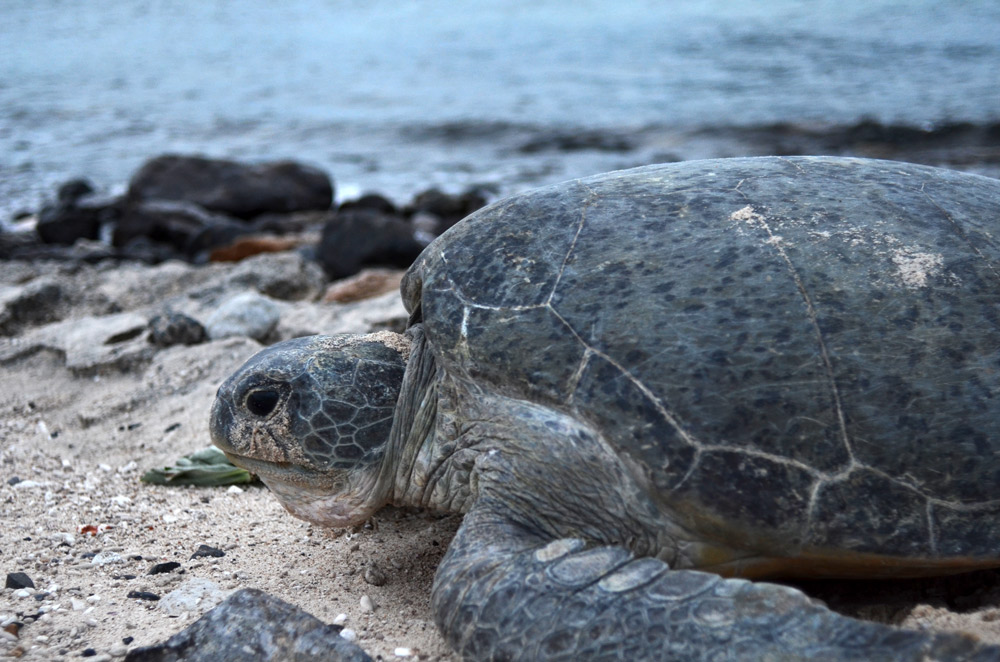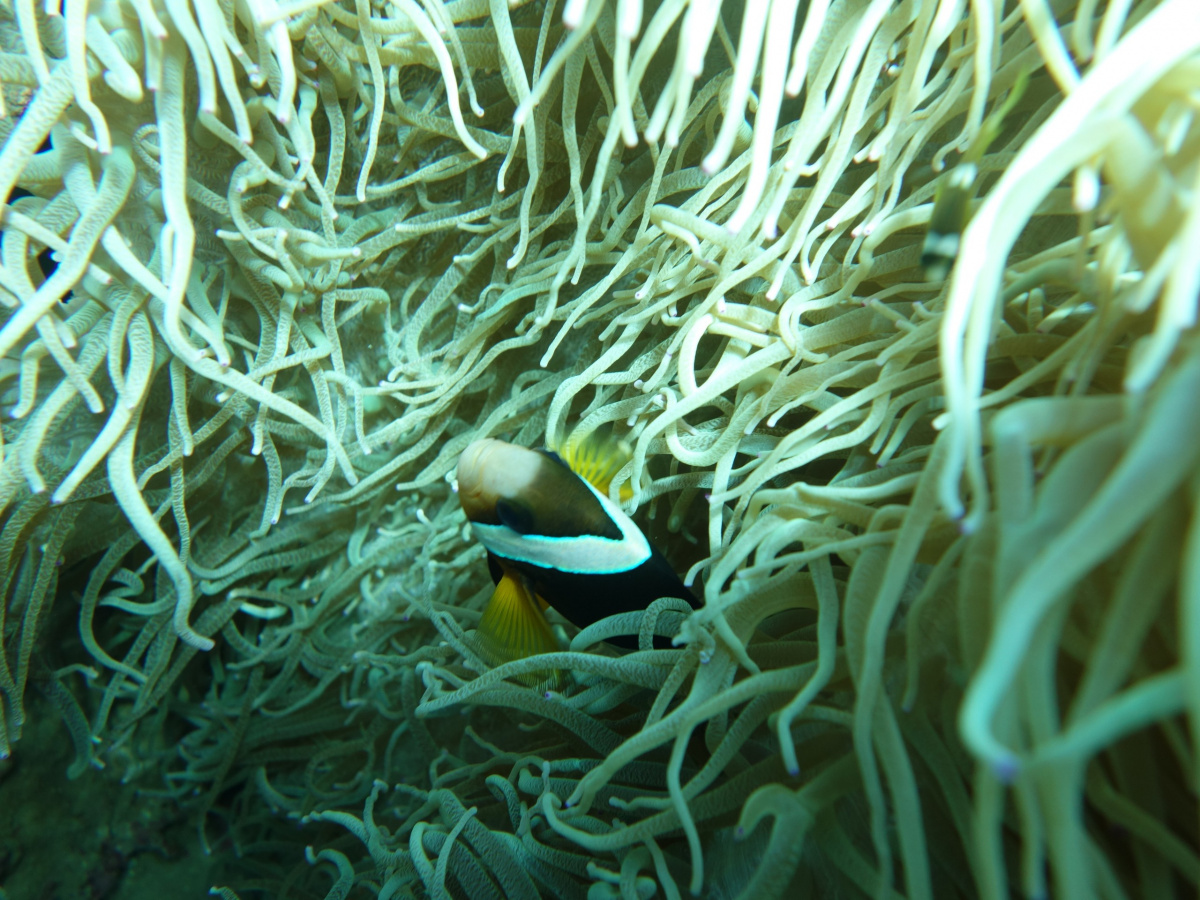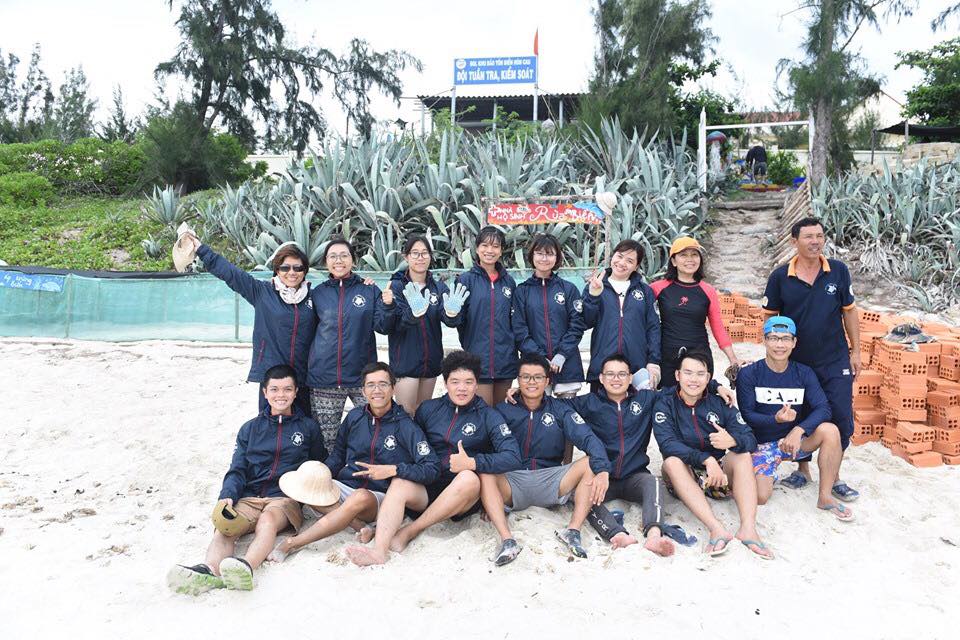Evaluating implementation of the Marine Turtle Conservation Action Plan 2016-2025
IUCN organized a meeting on July 13, 2017 in Da Nang to evaluate implementation of the Marine Turtle Conservation Action Plan (MTCAP). The meeting focused on the protection of the marine turtles’ population and their habitats in Vietnam.

Photo: A green turtle in Con Dao National Park © IUCN Viet Nam/Nguyen Hai Van
As well as IUCN, representatives from MPAs, the Institute of Marine Environment and Resources (IMER), TRAFFIC and the Department of Conservation and Aquatic Resources Development (DECAP)/Directorate of Fisheries (D-FISH) discussed progress to date and key challenges.
DECAP provided insights on action plan at the central government level. This included a review of legal documents related to the conservation and development of fisheries resources and to the protection of marine turtles and their habitats across Vietnam.
Updates were provided by staff from Bai Tu Long National Park, Con Co MPA, Cu Lao Cham MPA, Ly Son MPA, Department of Fishery Resources Protection in Binh Dinh Province, Nui Chua National Park and Con Dao National Park.
Many of the challenges raised were consistent across sites. Funding and limited human resources often limit progress.
While financing marine conservation is a challenge, it was acknowledged that there is potential to further empower MPAs. This would involve allowing MPA staff to arrest those caught violating MPA regulations. Penalties would include fines and court summons. This will require a policy change, which D-FISH will draft.
One of the major threats to sea turtles is fisheries by-catch. Globally, hundreds of thousands of turtles are accidentally caught by gillnets, shrimp trawl nets, and long-line hooks every year. To prevent this, scientists have worked with the shrimp trawlers to develop turtle excluder devices, or TEDs.
A MTCAP specific objective is to “Implement changes and improvements to fishing equipment with the aim of protecting marine turtles: 100% of tuna fishing vessels will be equipped with circle hooks; TEDs in gillnet fisheries are being tested, and at least 3% of all trawlers will use turtle TEDs.”
The use of a different type of hook in long-line fisheries that reduces marine turtle deaths without adversely affecting catches will be beneficial. These "circle" hooks are much less likely to be swallowed by turtles than traditional J-shaped hooks, which cause suffocation or internal bleeding when swallowed.
The discussion also covered reducing threats through capacity building and awareness raising. While such training has been done at many sites, its impact and the tracking of participants could be improved. There are cultural considerations as well as a resistance to change by those whose livelihoods depend on commercial fishing and the sale of turtle products.
While the impact of tourism on of marine turtle habitat was discussed, this is a large scale issue that is being addressed separately.
Marine turtle conservation requires a long term effort from many stakeholders and a much greater investment in time, people, and finances.



